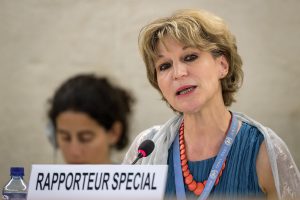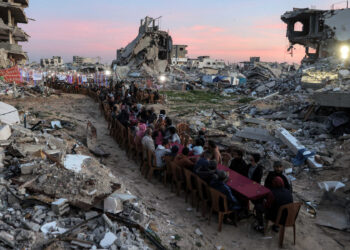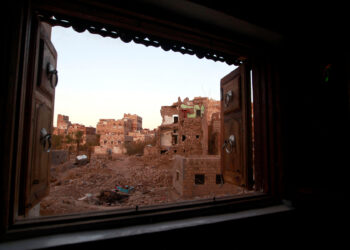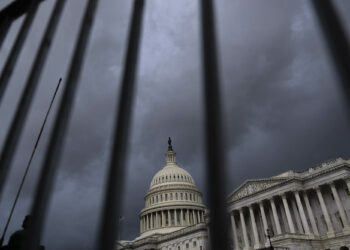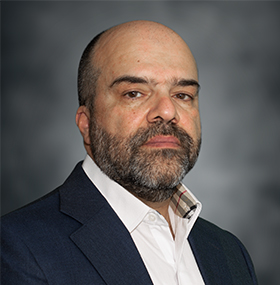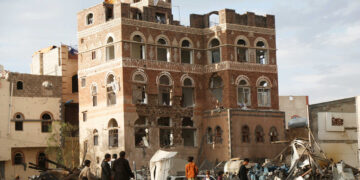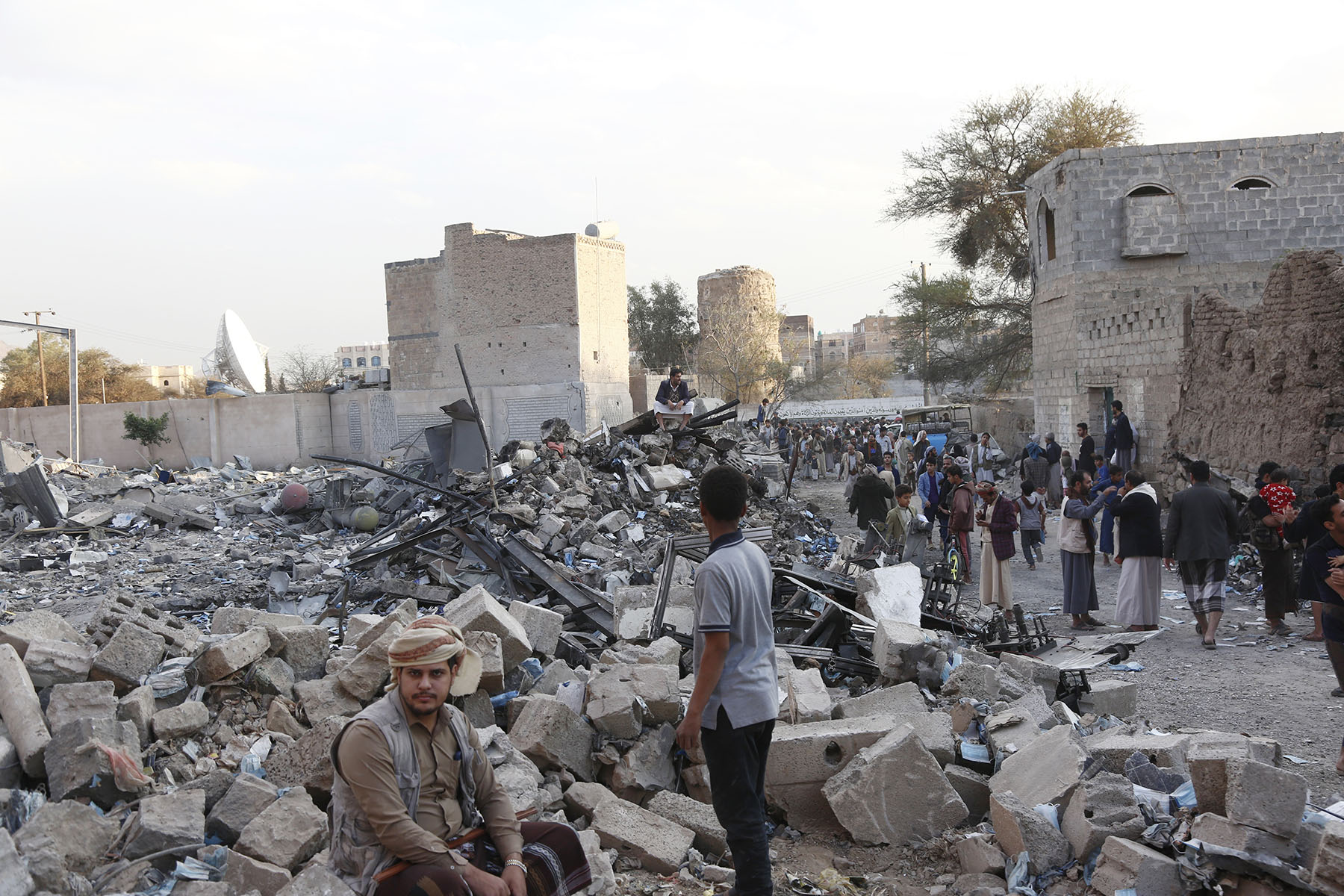Amr Al-Azm is a Syrian archaeologist and professor of Middle East history and anthropology at Shawnee State University in Ohio and the Gulf Studies Center at Qatar University.
Lakshmi Venugopal Menon is a research assistant and PhD candidate at the Gulf Studies Center at Qatar University.
In Afghanistan, where they notoriously blew up the treasured Bamiyan Buddhas when they were last in power in 2001, the Taliban are now claiming that protecting the country's vast cultural heritage "is our national priority."
In northwest Syria, the only remaining area of the country still out of the control of President Bashar al-Assad's regime, the dominant force on the ground, al-Qaida offshoot Hayat Tahrir al-Sham (HTS), has overseen the systematic and aggressive looting of archaeological sites. But HTS is now trying to present itself as a legitimate governing authority in Idlib and presided over the reopening of the city's antiquities museum, with appeals to international organizations for assistance in protecting cultural heritage in a region home to one of Syria's most important UNESCO-designated World Heritage sites.
Along with the Islamic State in Iraq and Syria, the Taliban and HTS have a well-documented track record of destroying, looting and trafficking in valuable cultural artifacts—part of their modus operandi of exploiting cultural heritage for profit and propaganda purposes. So this apparent change in attitude from the Taliban and HTS raises tangled ethical questions for anyone interested in protecting and preserving threatened cultural heritage in Syria and Afghanistan, as well as other conflict zones where armed, non-state groups hold sway. How should international experts and organizations like UNESCO respond to public declarations from these extremist groups that they are now supposedly protectors of heritage? Should they take them at face value and, despite their history, work with the likes of the Taliban and HTS to safeguard cultural heritage in Afghanistan and northwest Syria, from museums to archaeological sites, accepting that in the process they are also legitimizing them?
How should international preservationists respond to public declarations from extremist groups that they are now supposedly protectors of heritage?
- Amr al-Azm and Lakshmi Venugopal Menon
After its rise in 2014, the Islamic State captured international attention with its looting and rampant destruction of antiquities and cultural heritage across Iraq and Syria. This was largely due to its social media savvy and release of propaganda videos promoting their cultural rampages. But the Islamic State was not alone; an array of other extremist and designated terrorist organizations in Syria were looting and trafficking in antiquities, too, often copying the Islamic State's methods.
One such group was HTS, which formed in 2017 as a merger of the main armed opposition groups in northwest Syria, and was quickly taken over by Jabhat al-Nusra, an al-Qaida affiliate under the leadership of Abu Mohammad al-Jolani. Since then, HTS has become the dominant force in the opposition-held areas in Idlib. Jabhat al-Nusra's attitude to looting and trafficking in antiquities had been one of indifference. Any participation in such activity was done at the personal level, and its leadership did little to interfere in or attempt to control the thriving black market trade, with the exception of one instance in 2015. (That year, Sheikh Abdel Razak al-Mahdi of Jabhat al-Nusra's "Shura Council" issued a statement in support of a fatwa prohibiting the trade and looting of antiquities.)
In 2017, however, and coinciding with the emergence of HTS, there was a marked shift in Jabhat al-Nusra's attitude to cultural heritage—from indifference to keen interest in exploiting it as a resource. This likely reflected the arrival and recruitment of new fighters into its ranks from eastern Syria following the collapse of the Islamic State there. These new recruits brought with them the skill set and modus operandi familiar to areas previously under the Islamic State's control, including the looting and trafficking of cultural heritage. From 2017 onward, there was a steady increase in the systematic looting of archaeological sites in the Idlib region. HTS used a variety of methods to exploit and profit from the looting and sale of antiquities in northwest Syria, including recruiting local archaeologists and establishing networks of looters and dealers who were "licensed" by HTS to loot and sell antiquities under its watch.

Then, in 2018, HTS created the so-called "Salvation Government" to be its civilian arm in Idlib, taking over all civil administration in the region and seeking to project a sense of normalcy in daily life, in an effort to legitimize its takeover. Later that year, in what was meant to be a showcase for the Salvation Government as a functional entity, it oversaw the reopening of the Idlib Museum, which had been damaged by airstrikes and looting throughout Syria's war and houses one of the finest collections of antiquities in Syria, including cuneiform tablets from the ancient kingdom of Ebla that date back to 2400 BCE. The archaeologists and cultural heritage experts brought in to run the reopened museum, and to staff Idlib's own department of antiquities, did so with the express understanding that they were expected to generate revenue for the Salvation Government—and by extension HTS leaders—and use the museum's surviving collections to their advantage.
That meant trying to persuade the international community that HTS was now committed to protecting and preserving cultural heritage in Idlib and urging UNESCO to support them through technical and financial support. This is particularly significant since Idlib is home to one of Syria's most important UNESCO World Heritage sites: the dozens of ancient Byzantine settlements known as the Dead Cities. By securing the support of international organizations like UNESCO in cultural heritage efforts in Idlib, HTS could acquire international recognition and legitimacy for its Salvation Government, in addition to a new revenue stream.
This remained an interesting but little publicized local story in Syria until the summer of 2021, when the Taliban took over Afghanistan as U.S. forces withdrew after nearly 20 years of war. Given the Taliban's dark history of deliberately destroying ancient sites, there was considerable concern in Afghanistan and internationally that the Taliban takeover would be a significant threat to both Afghanistan's tangible and intangible cultural heritage. Yet the Taliban has instead pledged to protect cultural heritage—likely as a way to try and ease its international isolation and the pain of sanctions. The Taliban has repeatedly invited international experts and cultural preservationists, such as UNESCO and the Alliance for the Restoration of Cultural Heritage, to help fund cultural heritage projects in Afghanistan since its takeover.
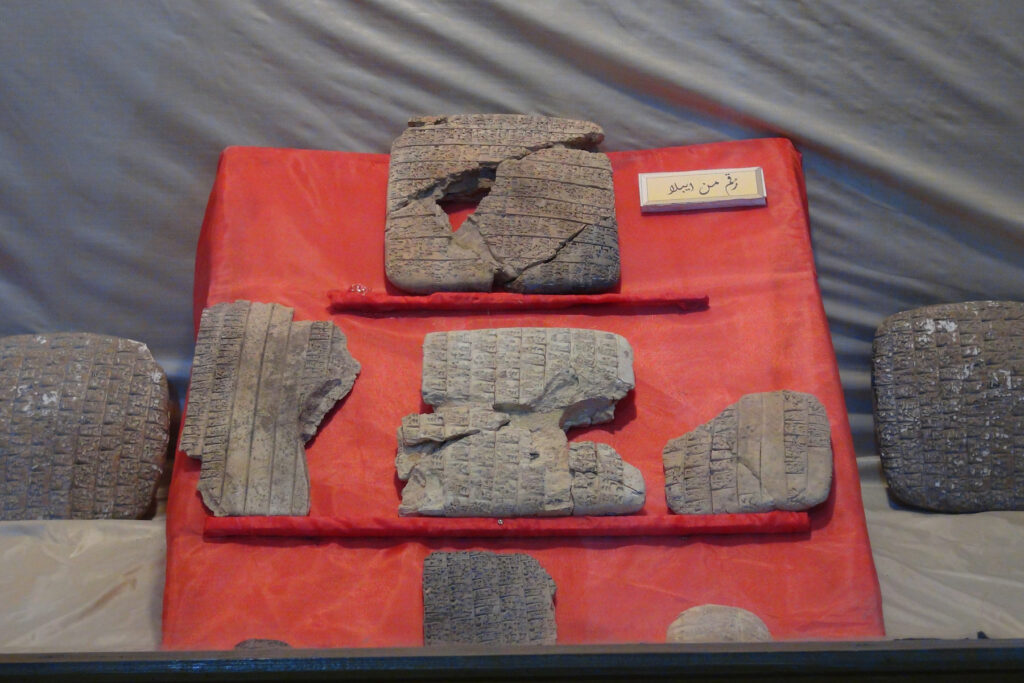
In December 2021, the Taliban reopened the National Museum in Kabul—whose collections, including ancient statues and other objects, had been smashed by the Taliban in 2001, when they were deemed un-Islamic and idolatrous. Then, last year, the Ministry for Information and Culture and the Kabul Municipality submitted an application to inscribe the Bagh-e-Babur Gardens on the UNESCO World Heritage list. In an interview with New Lines, the deputy minister of culture and art of the Taliban government, Mawlawi Atiqullah Azizi, called cultural heritage "our national priority" and termed its preservation "our responsibility" and "our obligation." The Taliban even designated March 11—the same day it blew up the Bamiyan Buddhas back in 2001—as the "Safeguarding of Cultural Heritage Day."
These efforts all coincided with requests by the Taliban government for funding from the international community to help protect archaeological sites that are currently under threat from looting and deterioration. "The Emirate of Afghanistan's Ministry of Information and Culture will support and cooperate with international organizations who have expertise in the field of safeguarding historic sites in Afghanistan," Azizi told The Art Newspaper.
Expressing their commitment to protect cultural heritage does not reflect a true shift in the core ideology of either the Taliban or Hayat Tahrir al-Sham.
- Amr al-Azm and Lakshmi Venugopal Menon
It is clear that the Taliban are emulating HTS' new tactics in Syria—expressing their commitment to protect cultural heritage and appealing to international organizations for funding and assistance. This change in method, however, must not be misunderstood as a deeper change in attitude. It does not reflect a true shift in the core ideology of either the Taliban or HTS. Instead, they are likely looking for political (and economic) advantages and have calculated that through cultural heritage, they can secure international recognition and legitimacy for the government that they took over, in the Taliban's case, or the nascent government that are trying to establish, in HTS'. In both Afghanistan and northwest Syria, the Taliban and HTS are trying to prove they can run institutions that function, offer services and provide competent governance. Overseeing museums and cultural heritage sites that the international community is desperate to see protected has advantages beyond just financial gain.
For cultural preservationists, the ethical dilemma remains over whether or not to work with these armed groups. If the international community continues to isolate and refuse any forms of cooperation or engagement with the Taliban and HTS, will UNESCO and other organizations miss out on a rare opportunity to protect threatened cultural heritage in Afghanistan and Syria, and even engage in some rare cultural diplomacy with them? And what if international support is not forthcoming? Can the Taliban and HTS, in that case, still be held solely responsible for any future loss of heritage through looting or neglect?










